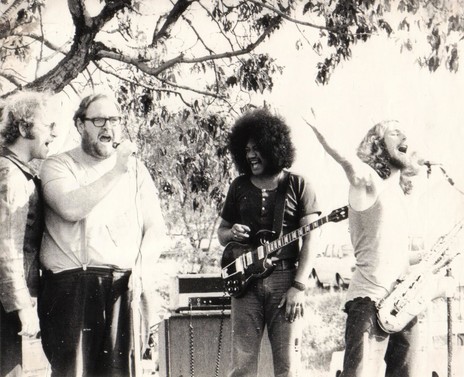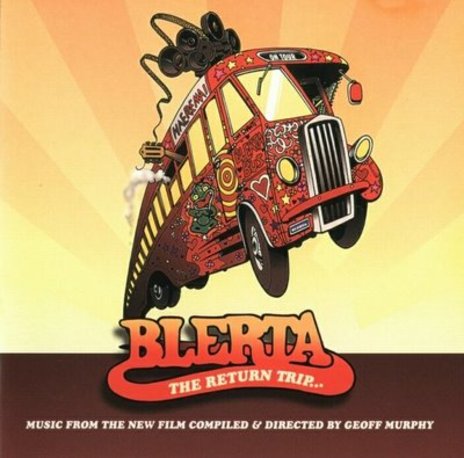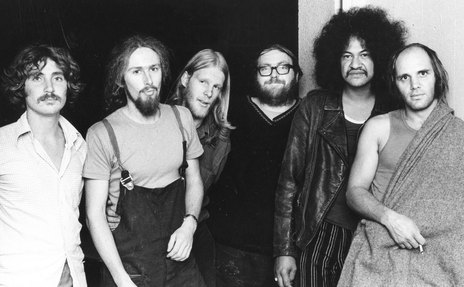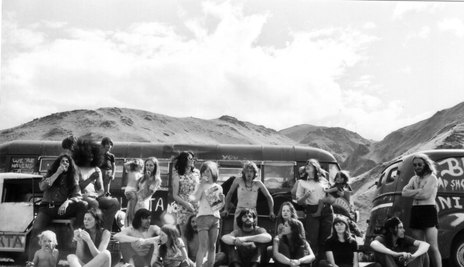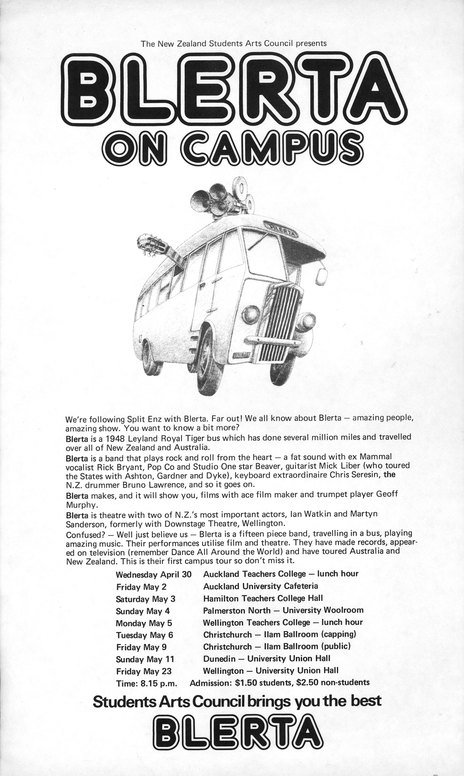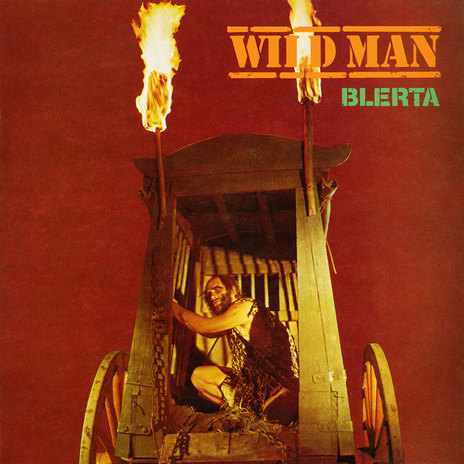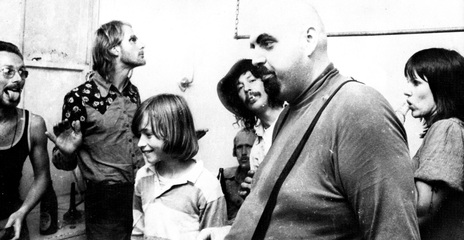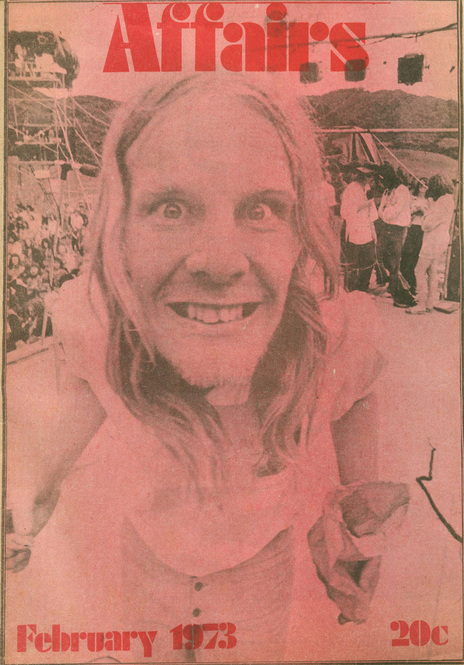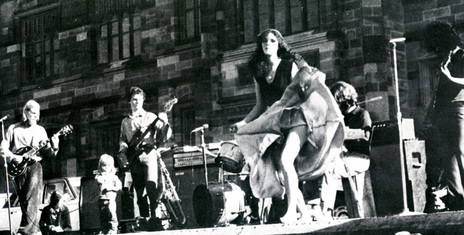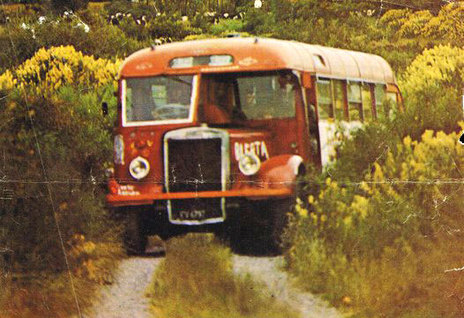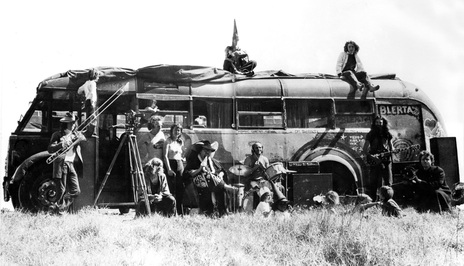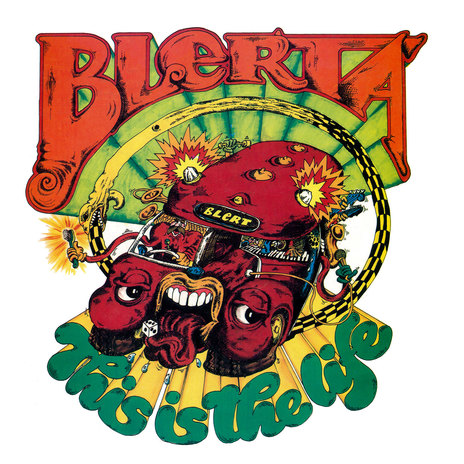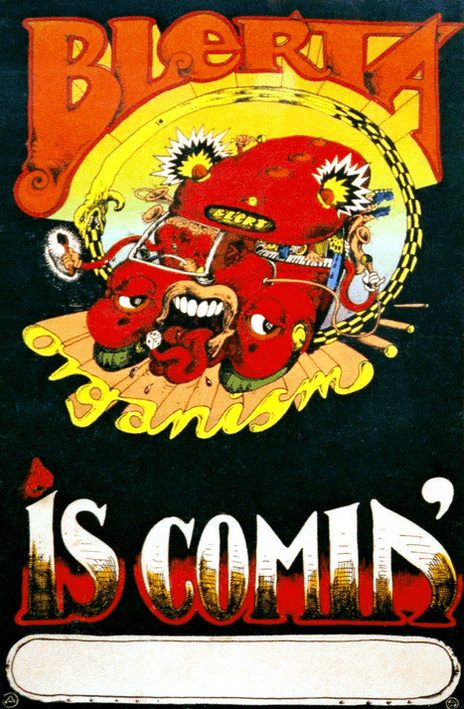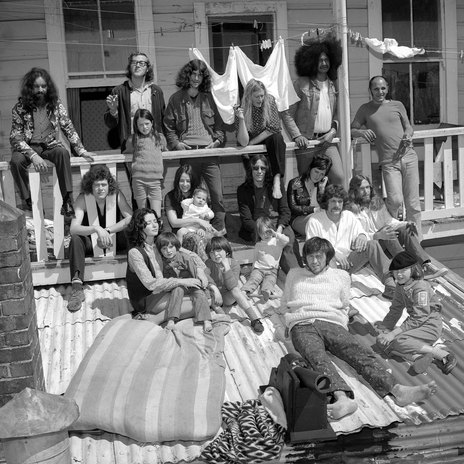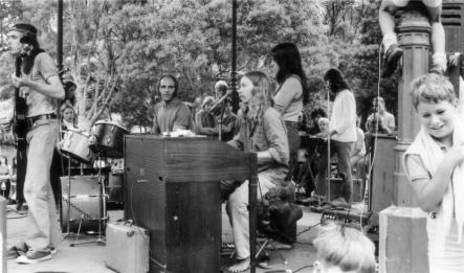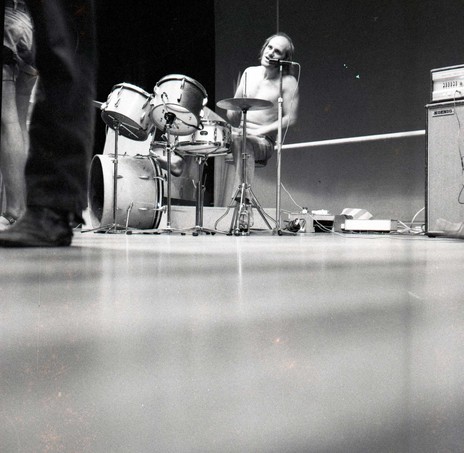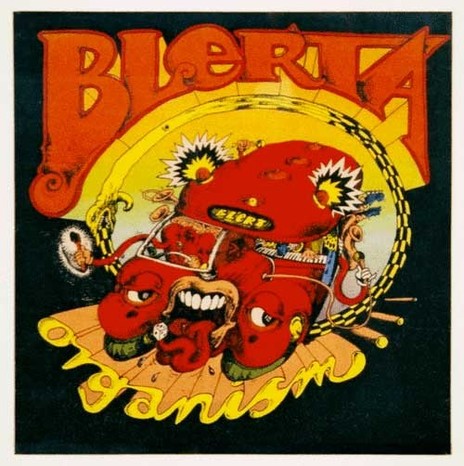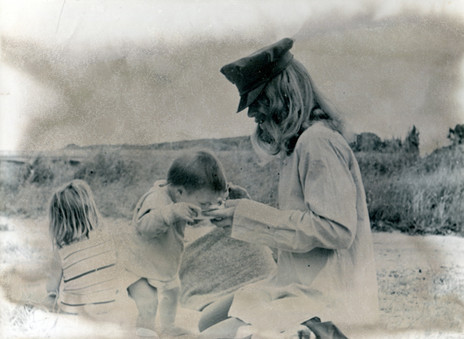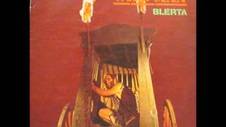Bruno was already an icon in the music industry, having played drums with many industry luminaries and released the single 'Bruno Do That Thing'. He had also made his mark as an actor in Tank Busters and TV series Pukemanu, working alongside school friend and director Geoff Murphy.
On finishing his term with Wellington’s brassy rockers The Quincy Conserve, for whom he wrote the award winning Ride The Rain, he joined singer Corben Simpson and Tony Littlejohn. Their trio then merged with Sons and Lovers guitarist Kemp Tuirirangi and keyboardist Alan Moon to complete Corben’s first solo album and the Littlejohn album for Polydor.
Bruno began to orchestrate a wider collaboration of musicians and actors around the Acme Sausage Company jazz band and multimedia film unit which he and Geoff Murphy had put together in the mid-1960s.
Murphy, and his brother Roy, were dedicated jazz buffs from an early age. At 17, Geoff took up the trumpet, and he helped form the Victoria University Jazz Club in about 1957; Roy, Bruno, and John Charles were other members of this “boisterous and unruly mob” of about 30. Every couple of months concerts would be held, of all kinds of jazz: trad, swing, mainstream, modern.
In 1959 the jazz club moved to Manners Street, and was named the Studio Jazz Club; a bookmaker uncle of Charles paid the rent. Other musicians who were members became better known as poets: Alan Loney, and Mark Young. A dozen people was considered a satisfactory “crowd”, Murphy remembered in Film in Aotearoa New Zealand. The MYQ – Mark Young Quartet – was, Murphy said in his memoir, the most polished of the club groups, playing the music of Charles Mingus. Nearly 20 years later, Murphy’s love of Mingus would provide the name of his breakthrough film: Goodbye Pork Pie.
The mix of music and larrikinism for which Murphy would become known can be seen in a letter that survives from 1969, in which the secretary of the Wellington Musicians’ Club – based on Wigan Street – writes to Murphy:
“At a recent Meeting of the Club Executive you behaviour was reported as not being in the best interests of the Club.
“It would appear that you were swinging from the rafters and walking along the top of the passageway. As the building is very frail to say the least, and as one of the light fittings in the passageway has already fallen down due to similar action, we would ask that you desist from such action in the future.”
Murphy says that after Quincy Conserve, Bruno was frustrated with the middle of the road music industry and the Happen Inn TV show’s focus on lightweight cover songs as representing the state of local pop culture.
What began as an extended holiday for the key players and their wives and children soon became an extended family outing that lasted half a decade.
“We despised mainstream television’s definition of New Zealand music tastes being foisted on the public. They were dominating the entire music industry, you couldn’t even get a pub gig unless you’d been on Happen Inn, so Bruno said let’s take it to the people direct. It was a political idea to short circuit what television was doing.”
What began as an extended holiday for the key players and their wives and children soon became an extended family outing that was to last half a decade as the unlikely cultural revolutionaries took to the road.
At the heart of the touring party was a 1948 Leyland Tiger bus, formerly the property of the Wellington City Council, accompanied by a motley bunch of V8s, a bread van, and the "Mighty Min" loaded with band, film and lighting equipment.
The musical line-up now included Murphy and the Acme Sausage Company brass section, and added a very nervous Beverley Morrison, better known to her friends as Beaver, Chris Seresin from Fresh Air on second keyboard and Don Burke from Natural Gas on guitar.
On the theatrical side were actors Tony Barry, Martyn Sanderson, Bill Stalker, Grant McFarlane, Ian Watkin and writer and philosopher Bill Gruar working up skits and creating props and a film crew under the guidance of cinematographer Alun Bollinger.
First stop in October 1971 was a little hall in Featherston. Bruno’s wife Veronica Lawrence says it was generally agreed that if there were more people on stage than in the audience then it wasn’t working. “Oh yes the famous five in Featherston … but it was so much fun so we just kept doing it. We weren’t much good at marketing then but we learned.”
Southern proving ground
BLERTA’s first South Island tour was a rock and rollercoaster ride, full of mayhem, mishaps, misunderstandings and magic.
Beaver sang six songs and backing vocals for material from the Corben Simpson and Littlejohn albums and new material was developed on the road. The muso jam sessions became more structured soundtracks to Murphy’s black and white movies and the kaleidoscopic oil wheel images splashing across venue walls from the spacy looking lighting module and there was plenty of opportunity to dance.
No-one got paid and soon finding enough money to pay for food and the petrol to get to the next town became a priority. The first time they got serious door sales someone stole the cashbox. There was chaos in Christchurch when their "concerto for rock band and motorcycle" was joined by a real bike gang who rode around the dance hall viewing footage of themselves screened on the wall.
The curious convoy was often stopped by cops looking for illicit substances and ostracised in small towns who imagined the worst.
The curious convoy was often stopped by cops looking for illicit substances and ostracised in small towns who imagined the worst when the big red bus and its colourful hippie entourage, often numbering up to 50 people, spilled out into their communities.
Geoff’s idea of producing free kids' shows was the perfect icebreaker and a way to create interest in their evening shows. Rather than feeling threatened by the invasion of craziness, people began to see BLERTA was giving something back.
In Queenstown, the creation of a 30-foot dragon and the birth of New Zealand anthem, 'Dance All Around The World', based on a Margaret Mahey children’s story, added a new dimension.
With growing television and newspaper coverage audiences grew and word got out that some of BLERTA’s songs might stand up in the studio. On returning to Wellington the whole troupe, piled into EMI studios to work on songs including 'Dance All Around The World', sung by Corben and interspersed with the cultured narration of Bill Stalker.
'Dance All Around The World' peaked at No.13 on the charts and became a finalist in the Loxene Golden Disc Awards while the band was touring the North Island.
The line-up continued to evolve; Beaver disembarked in Hawke’s Bay to pursue her own career and guitarist/songwriter Fane Flaws joined the crew claiming to have a magic act which he hurriedly created on the road.
New scripts were written and film shot and edited into meaningful segments to screen during the increasingly madcap performances which included pyrotechnics, keystone cop antics and revolutionary rantings which continued to enthrall and confuse audiences.
After a second tour of the South Island founding members Geoff Murphy and Bill Gruar were among those who decided they wanted their lives back.
Craziest Kiwi single
Unlikely inspiration for a follow-up EMI single, came at the Rotorua Post Office when Bruno spotted a discarded telegram that stated: Sorry to inform you that 'Aunty Ada' passed away today. He showed it to Corben and it became the catch line for possibly the craziest New Zealand single ever released.
Everyone huddled around the radio when they heard 'Aunty Ada' was to get its first airing. The announcer concluded: “Well you won’t be hearing that on my show again.” The jaunty beat and Corben’s fast clipped rap delivery clearly wasn’t everyone’s cup of tea.
Corben, increasingly appeared solo to support his own booming career but was back with the ever evolving BLERTA whenever his schedule allowed. Bruno now recruited Fresh Air members Chas Burke-Kennedy on guitar and George Barris on bass and continued to push new musical boundaries from behind the drums.
After a memorable performance at the Great Ngāruawāhia Music Festival in 1973, a slimmed down BLERTA headed to Australia to perform at a hippie festival in Nimbin and onto the university circuit. They teamed up with top jazz musicians to record an album with Renee Geyer which was rapidly withdrawn after legal issues arose over her recording contract.
Back in New Zealand in 1975 they re-recorded the album with Beaver on vocals before gearing up for a final tour with many of the old crew back on board. They rehearsed, filmed and wrote new material at the Waimarama "Snoring Waters" property in Hawke’s Bay which had been purchased by the Murphys, Lawrences, Bollingers and Sandersons from the profits of the Tankbusters movie.
The final version of BLERTA was more aligned to the jazz roots of Geoff, Bruno and keyboard player John Charles.
The final version of the legendary travelling band was more of a showband, aligned to the jazz roots of Geoff, Bruno and keyboard player John Charles, delivering an eclectic mix of gospel, country rock and time radio theatre on speed.
The multimedia elements and dramatic interludes were more tightly integrated as actors rushed on and off stage. The Keystone Cops, evil villains and bumbling heroes of the earlier shows were more developed in a mapcap mix of satire and social commentary.
Just the sort of stuff you might expect from a TV series … well there was an idea. And somehow they managed to convince the then head of programming at TVNZ to commission six episodes.
He had no idea what he was in for … exploding toilets, pianos dropped from great heights, periscopes in bathtubs … the 1812 Overture filmed using dozens of concrete mixers. What wasn’t filmed or put together at the Waimarama commune was produced at TVNZ’s Avalon Studios.
Between times BLERTA played several North Island venues including a recorded concert at the St James theatre in Wellington, another circuit of the South Island and a tour of six university campuses.
Material continued to be gathered for the TV shows with the fifth part evolving into the movie Wild Man with Bruno as the principal actor. This was also a transition point where the BLERTA crew and cast morphed into a full scale film production company.
In just over four years BLERTA had toured on both sides of the Tasman, released a dozen singles, three albums, made two movies and jumpstarted or confirmed the careers of many who went on to mainstream success in acting, music, film and drama.
In 2001, Geoff Murphy, now a seasoned Hollywood director, began to sift through the BLERTA archives, culling material from the TV shows, footage shot on the road and from the films for BLERTA Revisited movie (released on DVD and CD in 2004 as BLERTA: The Return Trip). Despite his international successes, he still rates that BLERTA film among his top five achievements.
--
Geoff Murphy died on 3 December 2018, aged 80.
–
BLERTA at Wellington's Downstage Theatre, 1975.
